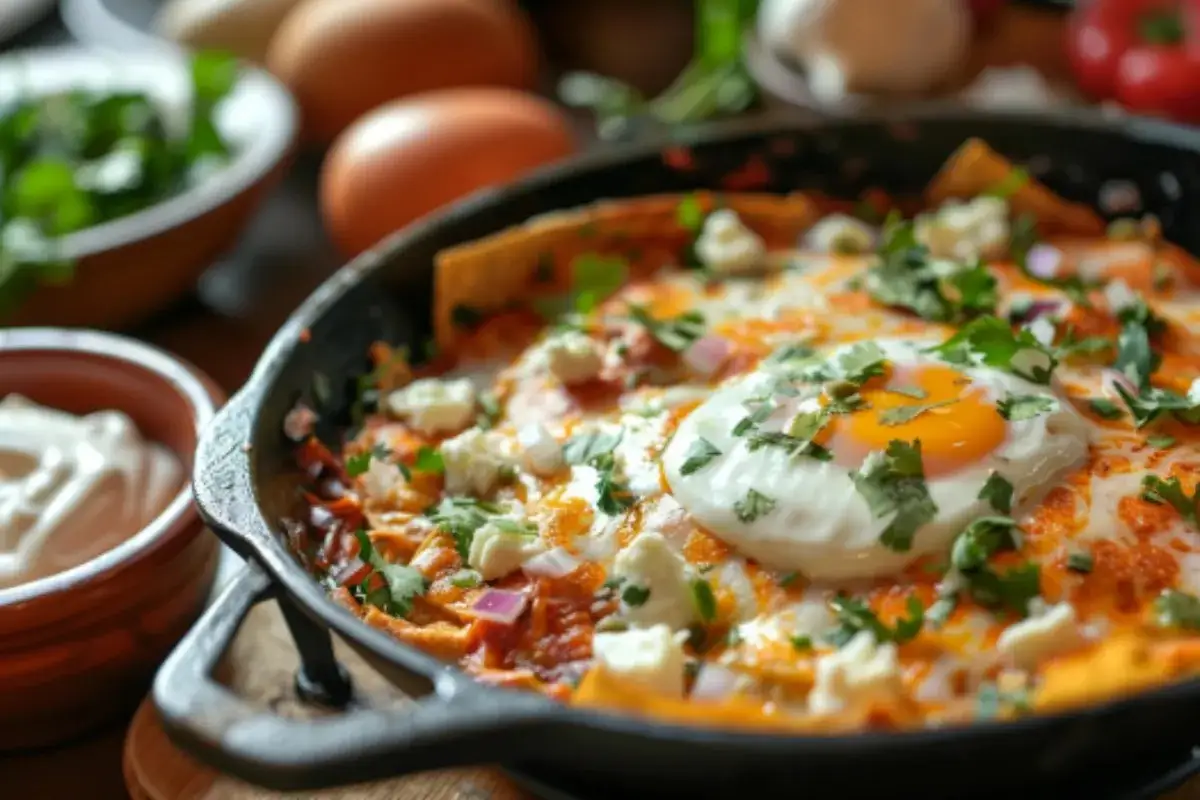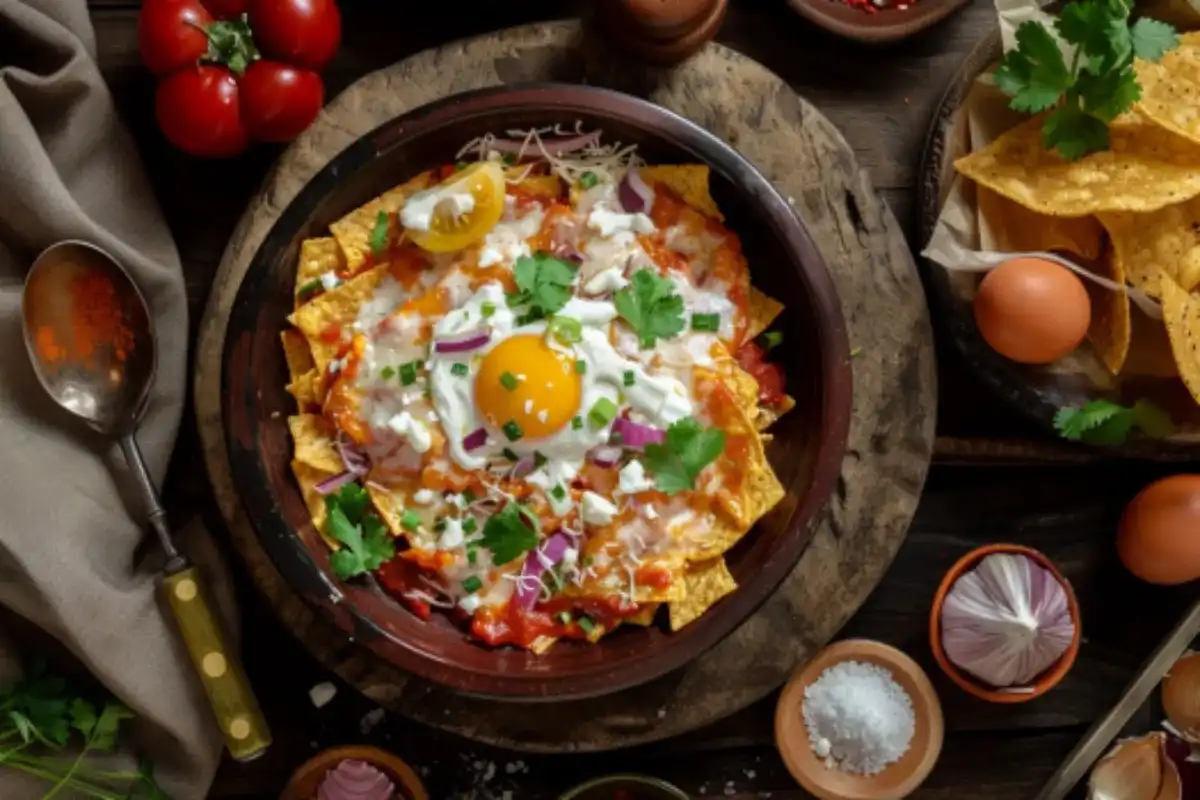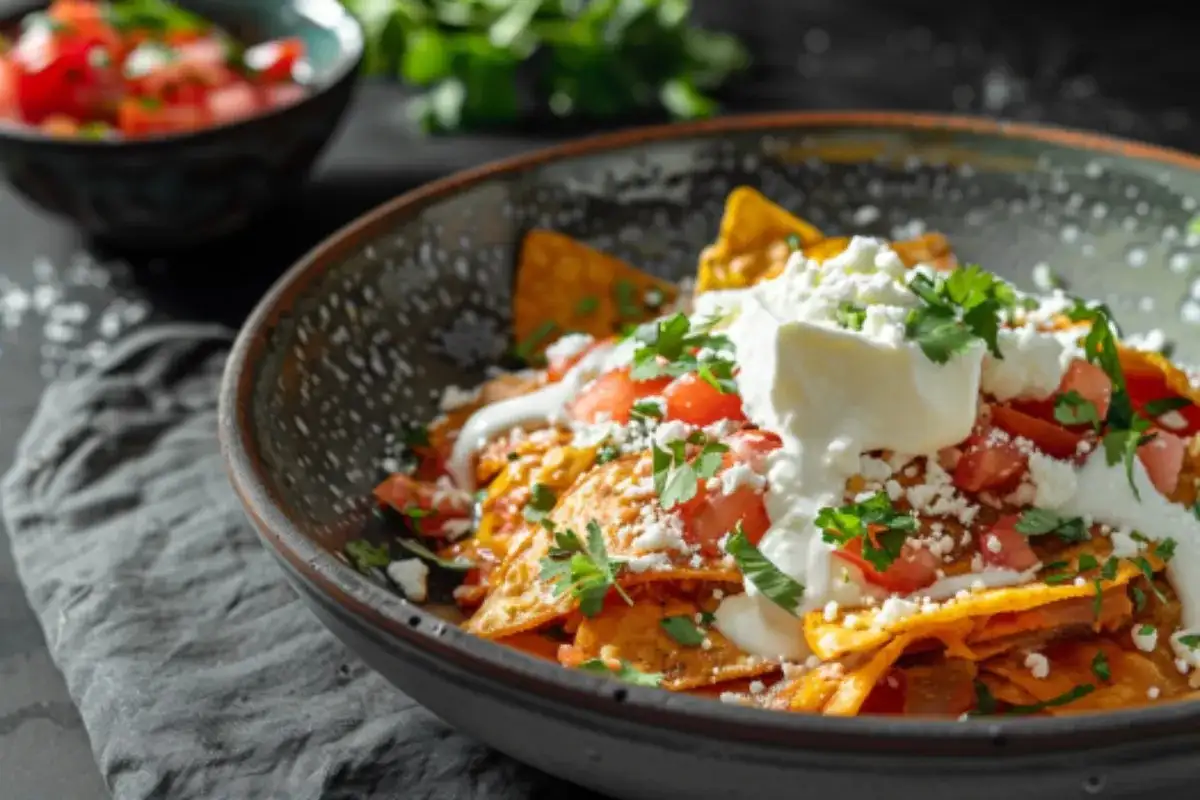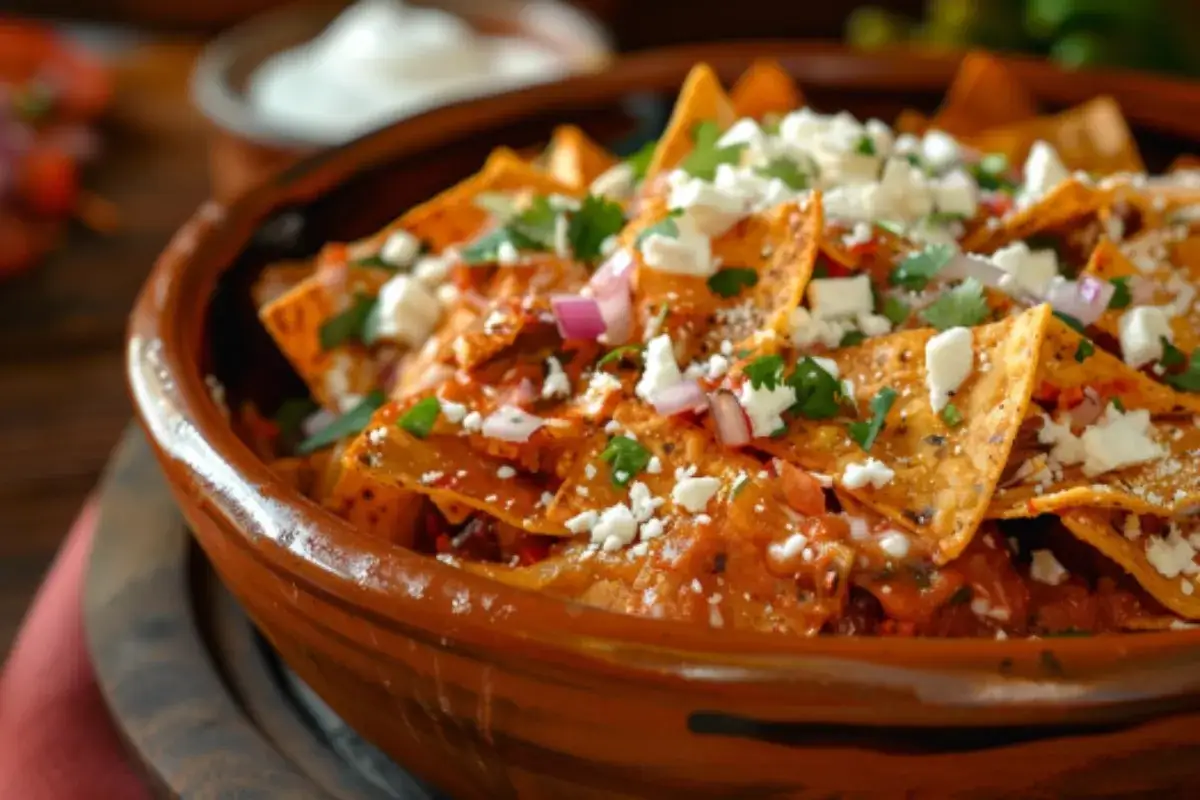Chilaquiles, a traditional Mexican dish, has long been a breakfast staple in Mexican households. It’s hearty, flavorful, and incredibly versatile. But there’s an ongoing debate among enthusiasts: should chilaquiles be crunchy or soft? This question has divided not only home cooks but also professional chefs and food critics. Some argue that the beauty of the dish lies in the crispiness of the tortilla chips, while others maintain that the true essence of chilaquiles is in their soft, salsa-soaked texture.
This article aims to explore both sides of the debate, delve into the origins and evolution of chilaquiles, and offer tips on how to make the perfect batch, regardless of whether you prefer them crunchy or soft. We’ll also examine regional variations and provide detailed instructions on crafting chilaquiles to suit your taste. Let’s dive into the world of chilaquiles and explore the rich flavors that make this dish so beloved.
What Are Chilaquiles?

Chilaquiles is a traditional Mexican dish that consists of crispy tortilla chips, typically either lightly fried or baked, tossed in salsa either salsa verde or salsa roja. Cooks often garnish the dish with a variety of toppings, including fried eggs, shredded chicken, cheese (like cotija or queso fresco), onions, avocado, and crema (Mexican sour cream). Whether you enjoy them for breakfast, brunch, or dinner, you can adapt chilaquiles into a hearty meal modified to include a range of ingredients based on personal preference.
If you want to make your own tortilla chips at home for an authentic touch, check out this guide on how to make homemade tortilla chips. These fresh chips will ensure the perfect base for your chilaquiles.
The dish’s texture and flavor largely depend on how you prepare it, and therein lies the debate. Some prefer chilaquiles with chips that remain crunchy despite being tossed in salsa, while others enjoy the chips when they are thoroughly soaked and soft. This debate is rooted in personal preferences, but regional variations also play a significant role in how people serve chilaquiles
A Brief History of Chilaquiles
Chilaquiles have a rich history that dates back to pre-Columbian Mexico. The name “chilaquiles” is derived from the Nahuatl word chīlāquilitl, which means “chili-soaked greens” or “something soaked in chili.” While today chilaquiles are typically made with fried tortilla chips and salsa, in ancient times, they were often made with whatever ingredients were on hand, including stale tortillas, a variety of chili-based sauces, and leftover meat or vegetables.
The dish evolved over time, becoming a way to use up leftover tortillas and salsa, and it eventually became a favorite in Mexican households due to its simplicity, affordability, and ability to feed large families. As it spread throughout Mexico, different regions developed their own versions of chilaquiles, some preferring a crispier texture while others leaned toward a softer, more stew-like consistency. In modern times, chilaquiles have become a staple in many Mexican restaurants and are even gaining popularity outside of Mexico.
For those curious about how to make authentic Mexican dishes, check out this birria tacos recipe for another delicious, traditional dish.
The Great Debate: Crunchy vs. Soft Chilaquiles
The key question when preparing chilaquiles is: should the chips be crunchy or soft? Both camps have their merits, and each approach to the dish yields a unique eating experience. To understand why people are so passionate about their preference, let’s break down the pros and cons of both crunchy and soft chilaquiles.
Crunchy Chilaquiles: The Pros
Those who advocate for crunchy chilaquiles enjoy the distinct textural contrast between crispy tortilla chips and smooth, flavorful salsa. Here are a few reasons why crunchy chilaquiles might be your go-to:
- Texture contrast: One of the primary reasons people love crunchy chilaquiles is the satisfying crunch of the chips paired with the softness of the toppings. The chips remain sturdy enough to hold up against the salsa, creating a delightful contrast with creamy elements like eggs or crema.
- Preservation of tortilla structure: Crunchy chilaquiles preserve the structural integrity of the tortilla chips. They retain their original form, which means each bite offers a satisfying crunch that doesn’t dissolve in your mouth.
- Bold flavors: With crunchy chilaquiles, the salsa coats the chips without fully soaking in, allowing the individual flavors of the tortilla, salsa, and toppings to stand out. This separation of flavors creates a layered and dynamic taste experience.
Crunchy chilaquiles tend to be more common in Northern Mexico, where thick tortilla chips are lightly fried and only briefly tossed in salsa to maintain their crispiness. The salsa is often added right before serving to avoid sogginess, giving the dish a freshly made, vibrant taste.
How to Make Crunchy Chilaquiles
If crunchy chilaquiles are what you’re after, there are a few techniques you can use to ensure the chips retain their crispiness:
- Use thick tortilla chips: Thicker chips will hold up better against the salsa and are less likely to become soggy. You can use store-bought chips or, for the best results, make your own by frying or baking tortillas until golden and crispy.
- Add salsa at the last minute: Instead of simmering the chips in salsa, toss them in the salsa just before serving. This way, they will still absorb some of the salsa’s flavor while remaining crunchy.
- Serve immediately: Crunchy chilaquiles should be served right away to prevent the chips from softening. If they sit too long, even the best-fried chips will begin to absorb moisture and lose their crunch.
For another crunchy Mexican dish, try out this ultimate taco recipe guide that highlights more texturally exciting Mexican meals.
Soft Chilaquiles: The Pros
On the flip side, many people argue that soft chilaquiles are the more traditional and authentic way to enjoy this dish. Fans of soft chilaquiles appreciate the melding of flavors that comes from allowing the chips to soak up the salsa. Here are some reasons why you might prefer soft chilaquiles:
- Absorption of flavor: When the chips are allowed to soak in the salsa, they absorb the rich, spicy flavors, creating a more cohesive dish. Each bite is filled with a burst of salsa, and the chips take on a flavorful, tender texture.
- Comforting texture: Soft chilaquiles offer a more comforting, stew-like consistency. The soaked chips blend with the salsa and toppings, making for a warm and hearty meal. This texture is particularly favored in Central and Southern Mexico.
- Easy to customize: Soft chilaquiles are more forgiving in terms of ingredients. Whether you’re using stale tortillas or fresh ones, the salsa will soften them up, making it easier to create a delicious dish with whatever you have on hand.
Soft chilaquiles are commonly served in the southern regions of Mexico, where the dish is often simmered longer, allowing the chips to fully absorb the salsa and become tender. This method results in a more cohesive, comforting dish that is perfect for slow, leisurely meals. If you’re interested in learning more about the origins of chilaquiles, check out this article on the history of chilaquiles, which delves into how the dish became a staple in Mexican cuisine.
How to Make Soft Chilaquiles
To make soft chilaquiles, you’ll need to simmer the tortilla chips in the salsa for a few minutes, allowing them to soak up the flavors and become tender. Here’s how:
- Use thin or stale chips: Thin tortilla chips or slightly stale tortillas are perfect for making soft chilaquiles. They’ll absorb the salsa more quickly and thoroughly than thick, fresh chips.
- Simmer the chips in salsa: Place the chips in a pan with the salsa and simmer for 5 to 10 minutes, stirring occasionally to ensure even coverage. The longer the chips simmer, the softer they will become.
- Cover while cooking: To speed up the softening process, cover the pan while the chips simmer in the salsa. This will trap steam and help the chips absorb the salsa more quickly.
For more comforting Mexican recipes, check out these rotisserie chicken recipes that pair well with soft chilaquiles.
Factors That Influence the Texture of Chilaquiles

Several factors determine whether your chilaquiles will end up crunchy or soft. Understanding these factors will allow you to tailor the dish to your personal preference. Here are some key elements that influence the texture:
1. Type of Tortilla Chips
The type of tortilla chips you use plays a crucial role in the texture of your chilaquiles. Thick, homemade chips will stay crunchy longer than thin, store-bought chips. If you prefer crunchy chilaquiles, opt for thick chips or make your own by frying tortillas. On the other hand, if you prefer soft chilaquiles, thinner chips will absorb salsa more easily and become tender.
2. Salsa Consistency
The consistency of the salsa you use also impacts the texture. Thick salsas, like those made from roasted tomatoes or tomatillos, will coat the chips without fully soaking in, helping to maintain their crunch. In contrast, a thinner, more watery salsa will be absorbed by the chips, resulting in a softer texture. If you prefer crunchy chilaquiles, use a thicker salsa, and for soft chilaquiles, opt for a thinner one.
3. Cooking Time
The longer the chips sit in the salsa, the softer they will become. For crunchy chilaquiles, toss the chips in salsa just before serving to prevent them from becoming soggy. If you want soft chilaquiles, allow the chips to simmer in the salsa for several minutes until they reach your desired level of tenderness.
4. Amount of Salsa
The amount of salsa you use can also affect the texture of your chilaquiles. Using more salsa will lead to softer chilaquiles, as the chips will have more liquid to absorb. If you prefer crunchy chilaquiles, use just enough salsa to lightly coat the chips without drenching them.
Regional Variations of Chilaquiles
Chilaquiles are a dish that varies widely depending on where you are in Mexico. Each region has its own take on the dish, with different preferences for ingredients and textures.
Central Mexico
In Central Mexico, soft chilaquiles are often preferred. The chips are simmered in salsa until they become tender, resulting in a dish that is almost stew-like in consistency. Toppings like fried eggs, chicken, and crema are common, and the dish is typically served with a side of refried beans.
Northern Mexico
In Northern Mexico, chilaquiles are more likely to be served crunchy. The chips are fried until golden and tossed in salsa just before serving, allowing them to retain their crispness. This version of chilaquiles is often served with scrambled eggs, avocado, and a sprinkle of queso fresco.
Southern Mexico
In Southern Mexico, chilaquiles often feature a blend of textures, with some chips remaining crisp while others soften in the salsa. The salsa is typically made from fresh ingredients, and the dish is garnished with ingredients like fresh cheese, onions, and cilantro.
Common Mistakes to Avoid When Making Chilaquiles
Whether you prefer crunchy or soft chilaquiles, there are a few common mistakes to avoid when making this dish:
- Using too much salsa: Overloading the dish with salsa will quickly turn crunchy chips into mush. Use just enough salsa to coat the chips, and add more only if needed.
- Cooking the chips for too long: If you want crunchy chilaquiles, don’t simmer the chips in the salsa for too long. Toss them in the salsa just before serving to maintain their crispness.
- Using stale chips for crunchy chilaquiles: If you’re aiming for crunchy chilaquiles, make sure to use fresh or freshly fried tortilla chips. Stale chips will quickly become soggy, even with minimal salsa.
How to Make the Perfect Chilaquiles

Now that you know the ins and outs of the crunchy vs. soft debate, it’s time to make your own chilaquiles! Whether you prefer them crunchy or soft, follow these steps for a delicious dish.
Crunchy Chilaquiles Recipe
- Ingredients:
- 8-10 corn tortillas (cut into wedges)
- 1 cup salsa verde or salsa roja
- ½ cup crumbled queso fresco
- ¼ cup sour cream or crema
- 2 eggs, fried (optional)
- Fresh cilantro and diced onions for garnish
- Instructions:
- Lightly fry the tortilla wedges in a large skillet with oil until they’re crispy and golden.
- Prepare your salsa in a separate pan, warming it to your desired temperature.
- Just before serving, toss the fried chips lightly in the salsa to coat without soaking.
- Top with queso fresco, sour cream, and a fried egg. Garnish with cilantro and onions.
- Serve immediately.
For the perfect fried egg to go on top, check out this guide to frying eggs.
Soft Chilaquiles Recipe
- Ingredients:
- 8-10 corn tortillas (cut into wedges)
- 1 cup salsa verde or salsa roja
- ½ cup shredded chicken (optional)
- ½ cup shredded cheese (like queso fresco or cotija)
- ¼ cup sour cream or crema
- Fresh avocado and cilantro for garnish
- Instructions:
- Fry or bake the tortilla wedges until golden.
- Add the salsa to a skillet and bring it to a simmer. Add the tortilla chips and stir to coat.
- Cover the skillet and simmer for 5-7 minutes, or until the chips have softened.
- Add the shredded chicken and cheese, stirring gently to combine.
- Top with sour cream, avocado, and cilantro. Serve immediately.
Frequently Asked Questions: Crunchy or Soft?
1. Are chilaquiles supposed to be crunchy or soft?
A: It depends on personal preference. Some enjoy the textural contrast of crunchy chips, while others prefer the comforting, stew-like consistency of soft chilaquiles.
2. Can you reheat chilaquiles and keep them crunchy?
A: Not easily. Once chilaquiles have become soft, it’s difficult to restore their crunch. It’s best to serve crunchy chilaquiles fresh.
3. Should chilaquiles be served immediately after preparation?
A: Yes, especially if you want them crunchy. Soft chilaquiles can sit longer, but crunchy ones should be served right away to maintain their texture.
4. Can I use store-bought tortilla chips for chilaquiles?
A: Yes, but the texture will vary. Store-bought chips tend to be thinner and will soften more quickly in salsa, so they are better suited for soft chilaquiles.
Conclusion
At the heart of the crunchy vs. soft chilaquiles debate lies the beauty of this dish’s versatility. Whether you prefer the crisp bite of freshly fried tortilla chips or the tender comfort of salsa-soaked tortillas, you can tailor chilaquiles to suit your tastes. Experiment with different cooking methods, salsas, and toppings to find the version of chilaquiles that you love most. Whether crunchy or soft, chilaquiles offer a comforting and flavorful way to enjoy traditional Mexican cuisine.
For more inspiration on Mexican recipes, head over to Talia Recipes and discover a world of delicious possibilities.

